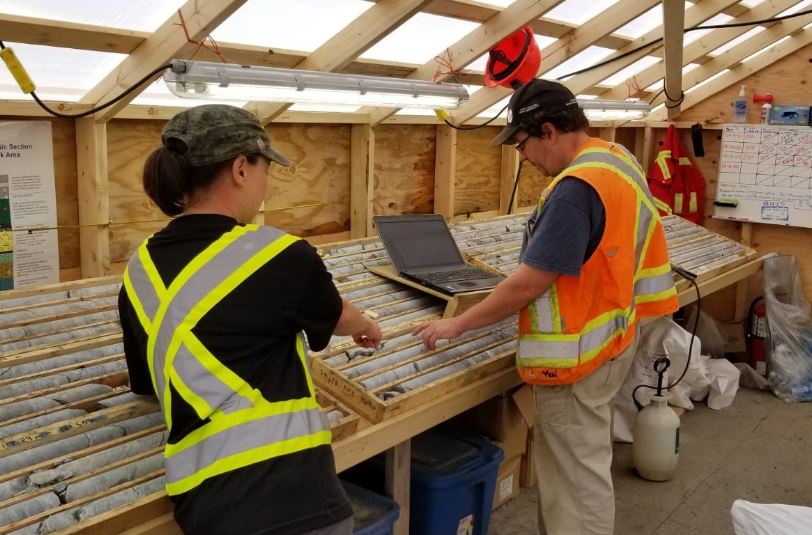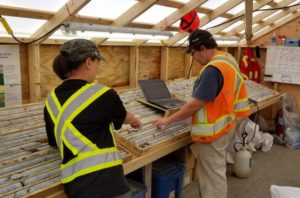Skeena drills 5.71 g/t gold equivalent at Eskay Creek


Skeena Resources Ltd. [SKE-TSXV; SKERF-OTC] on Thursday January 14 released the final assay results from a Phase one surface drilling program at the company’s Eskay Creek Project, which is located in northwest British Columbia’s Golden Triangle region.
The program targeted the 21A, 21C, and 22 zones. However, results announced Thursday are from the 22 Zone, which was originally outlined by limited surface drilling in 2003 and 2004.
It is a tabular, sub-vertical, rhyolite-hosted feeder structure to the now eroded mudstone-hosted mineralization that is typical of Eskay Creek deposits.
Highlights from six holes include 4.07 g/t gold, 122.30 g/t silver (5.71 g/t gold equivalent) over 92.15 metres at surface in hole [SK-18-049], the company said. That included 20.10 g/t gold, 321.62 g/t silver (24.39 g/t gold equivalent) over 14 metres.
Skeena advanced on the news, rising 1.72% or $0.005 to 29.5 cents on active volume of 942,460. The shares trade in a 52-week range of 27.5 cents and 80 cents.
Skeena is engaged in a bid to revive two of Canada’s most successful high-grade precious metal mines – Snip and Eskay Creek. Both are located in the Golden Triangle region.
“Eskay Creek was a remarkable discovery that became an extraordinary mine,” Skeena CEO Water Coles has said. “It produced 3.3 million ounces of gold and 160 million ounces of silver from 2.2 million tonnes of ore from 1994 until closure in 2008,” he said.
Snip was also a high-grade mine that produced approximately one million ounces of gold from 1991 to 1999, at an average gold grade of 25 g/t at a 12 g/t reserve cut off. Eskay Creek ranked as highest grade gold mine in the world at the time that it was in production. It was also the world’s fifth highest grade silver producer.
“The decision to stop mining at Eskay Creek would have happened in 2005-2006 when the price of gold was around $500 an ounce,” Earle said.
In December, 2017, Skeena secured an option to acquire a 100% stake in the Eskay Creek property, which is endowed with excellent infrastructure, including all-weather road access and proximity to the new 287-kilovolt Northwest Transmission Line.
The 22 Zone currently has a drill-defined strike length of 300 metres and horizontal width in excess of 50 metres. It has only been tested in the upper 100 metres at an average 40-metre drill spacings.
The 2018 pit constrained inferred resources hosted within the 22 Zone consist of 171,000 gold equivalent ounces (1.45 million tonnes, grading 2.5 g/t gold, 89 g/t silver, or 3.7 g/t gold equivalent). Gold equivalent is calculated via the formula: Gold [g/t] + silver [g/t]/75.
The 2018 Phase 1 drilling program was designed to infill and upgrade the inferred resources in the 22 Zone by increasing drill density to 20-metre intercept spacing. But due to the onset of winter weather conditions, only six of the planned 20 holes were drilled.
The outstanding portion of the program will be completed during the 2019 exploration season.
